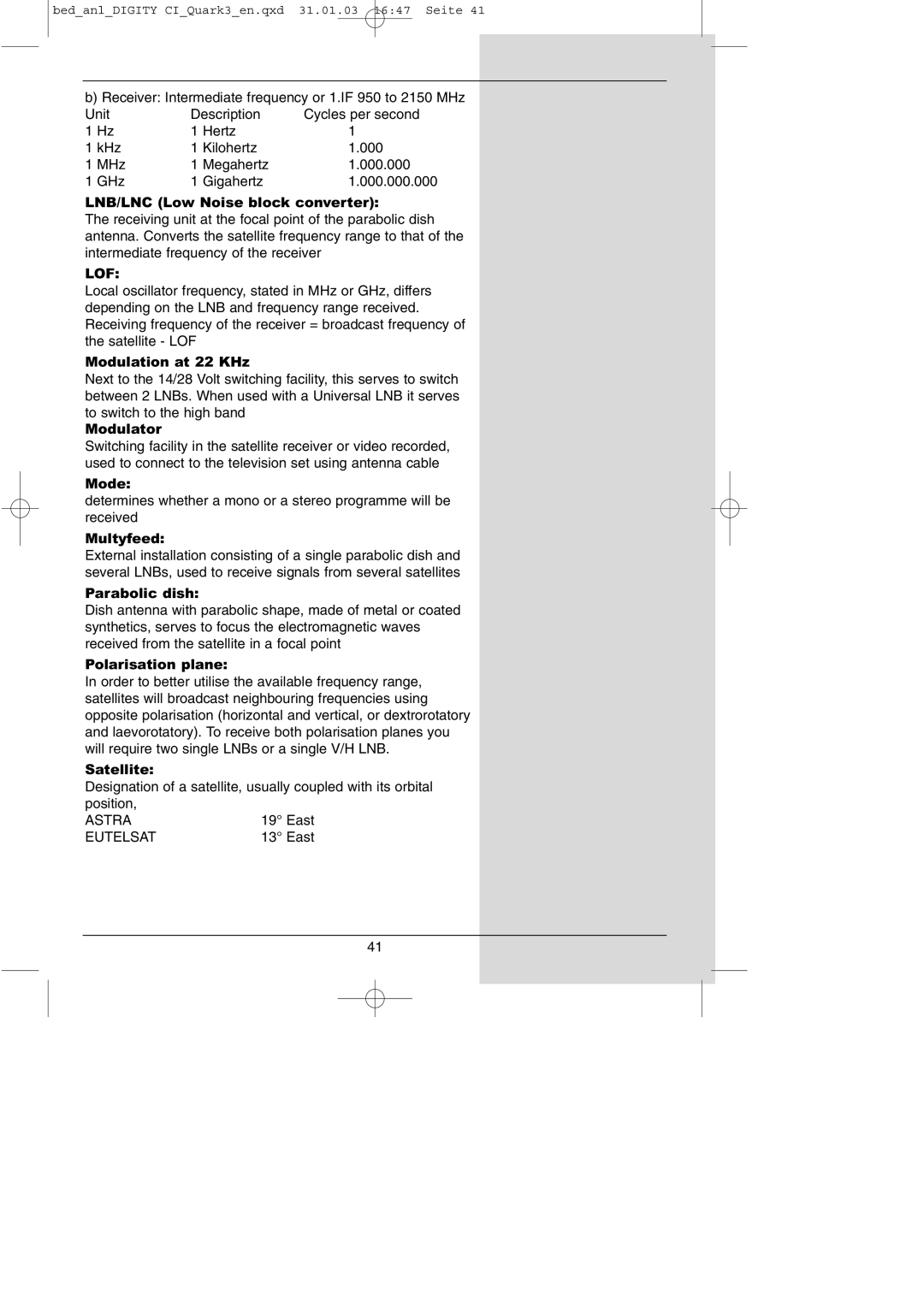
bed_anl_DIGITY CI_Quark3_en.qxd 31.01.03 16:47 Seite 41
b) Receiver: Intermediate frequency or 1.IF 950 to 2150 MHz
Unit | Description | Cycles per second | ||
1 | Hz | 1 | Hertz | 1 |
1 kHz | 1 | Kilohertz | 1.000 | |
1 | MHz | 1 | Megahertz | 1.000.000 |
1 | GHz | 1 | Gigahertz | 1.000.000.000 |
LNB/LNC (Low Noise block converter):
The receiving unit at the focal point of the parabolic dish antenna. Converts the satellite frequency range to that of the intermediate frequency of the receiver
LOF:
Local oscillator frequency, stated in MHz or GHz, differs depending on the LNB and frequency range received. Receiving frequency of the receiver = broadcast frequency of the satellite - LOF
Modulation at 22 KHz
Next to the 14/28 Volt switching facility, this serves to switch between 2 LNBs. When used with a Universal LNB it serves to switch to the high band
Modulator
Switching facility in the satellite receiver or video recorded, used to connect to the television set using antenna cable
Mode:
determines whether a mono or a stereo programme will be received
Multyfeed:
External installation consisting of a single parabolic dish and several LNBs, used to receive signals from several satellites
Parabolic dish:
Dish antenna with parabolic shape, made of metal or coated synthetics, serves to focus the electromagnetic waves received from the satellite in a focal point
Polarisation plane:
In order to better utilise the available frequency range, satellites will broadcast neighbouring frequencies using opposite polarisation (horizontal and vertical, or dextrorotatory and laevorotatory). To receive both polarisation planes you will require two single LNBs or a single V/H LNB.
Satellite:
Designation of a satellite, usually coupled with its orbital position,
ASTRA EUTELSAT
41
